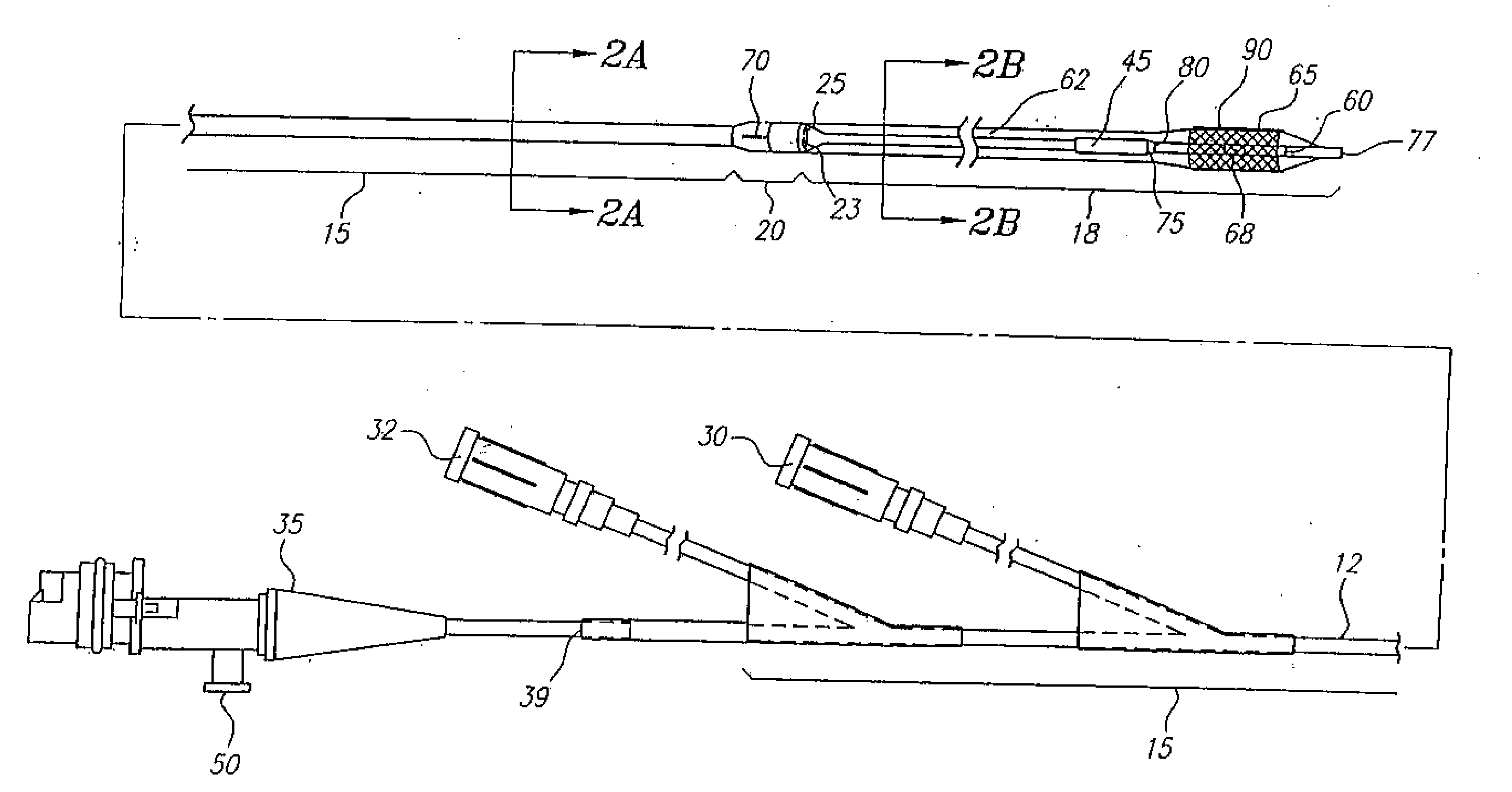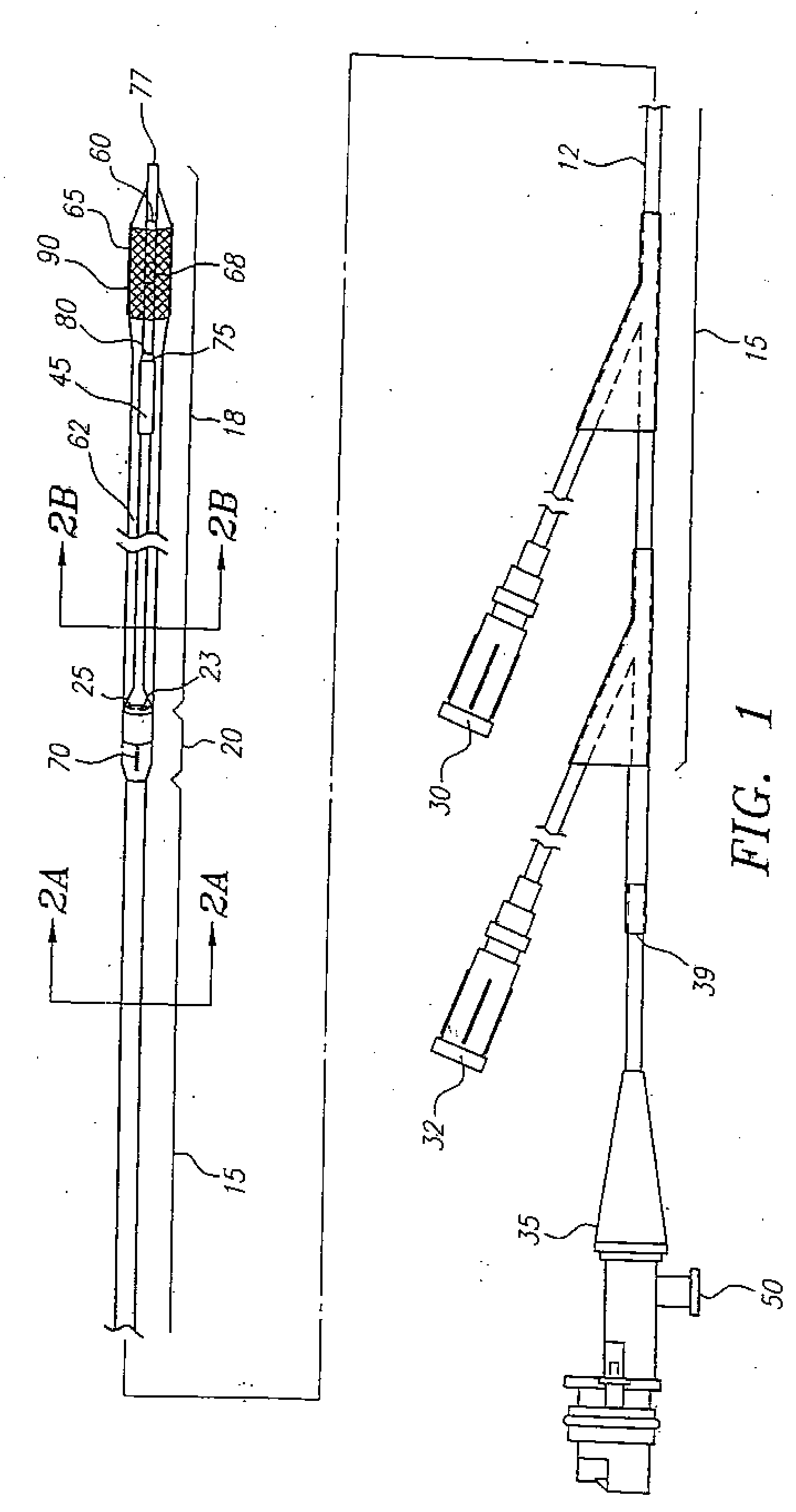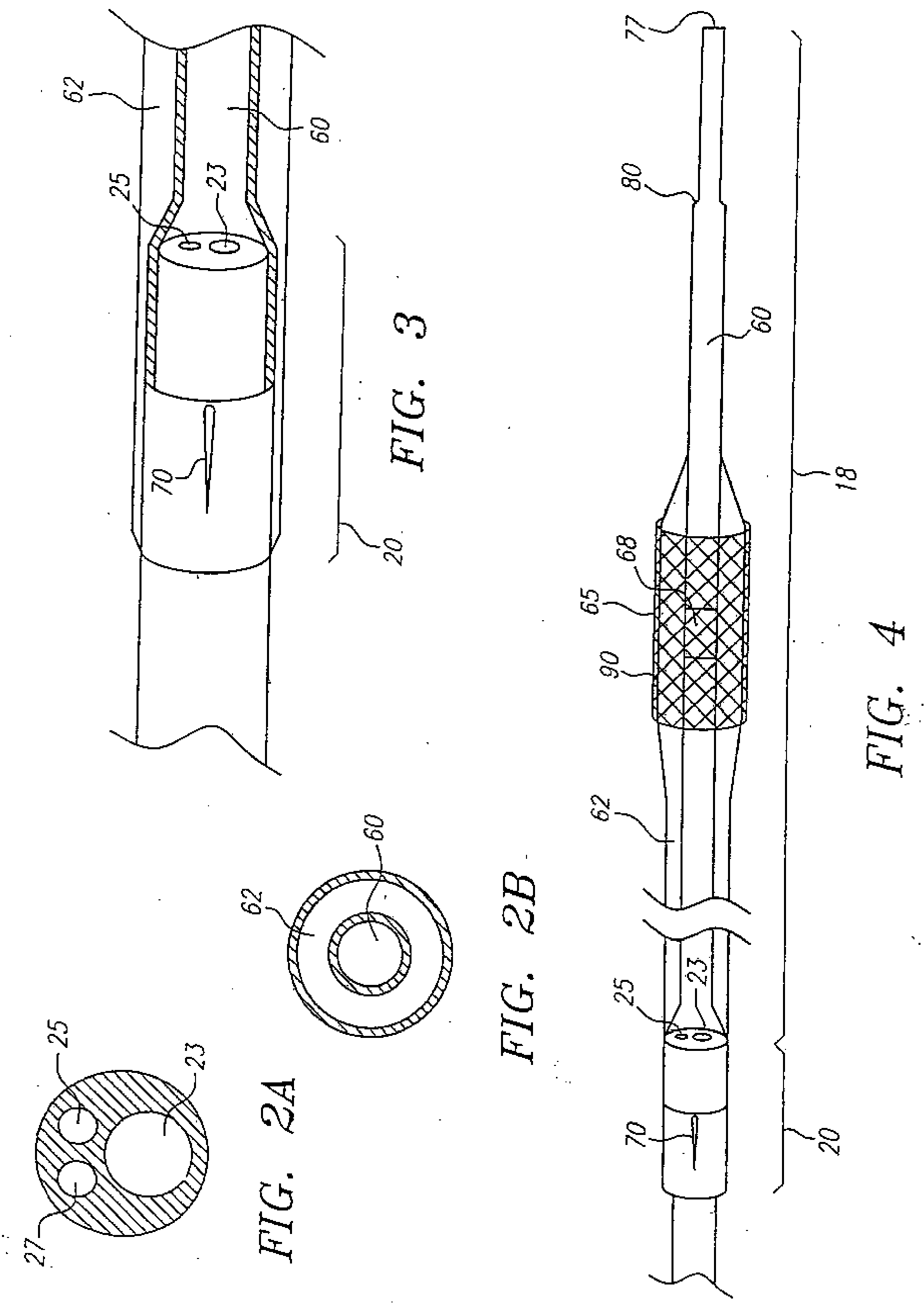Catheter System Having Imaging, Balloon Angioplasty, And Stent Deployment Capabilities, And Method Of Use For Guided Stent Deployment
- Summary
- Abstract
- Description
- Claims
- Application Information
AI Technical Summary
Benefits of technology
Problems solved by technology
Method used
Image
Examples
Embodiment Construction
[0041] The prosthetic devices which are preferred for use with the catheters and methods described herein include stents, and particularly the Palmaz-Schatz stent which is available from Johnson & Johnson. Stents for use herein are disclosed in Palmaz, U.S. Pat. No. 4,733,665, and Cragg, U.S. Pat. No. 5,405,377, both of which are expressly incorporated herein by reference. Briefly, these stents include a tubular-shaped member having first and second ends and a wall surface disposed between the first and second ends, the wall surface being formed by a plurality of intersecting elongate members, at least some of the elongate members intersecting with one another intermediate the first and second ends of the tubular-shaped member; the tubular-shaped member having a first diameter which permits intraluminal delivery of the tubular-shaped member into a body passageway having a lumen; and the tubular-shaped member having a second, expanded diameter, upon the application from the interior ...
PUM
 Login to View More
Login to View More Abstract
Description
Claims
Application Information
 Login to View More
Login to View More - R&D
- Intellectual Property
- Life Sciences
- Materials
- Tech Scout
- Unparalleled Data Quality
- Higher Quality Content
- 60% Fewer Hallucinations
Browse by: Latest US Patents, China's latest patents, Technical Efficacy Thesaurus, Application Domain, Technology Topic, Popular Technical Reports.
© 2025 PatSnap. All rights reserved.Legal|Privacy policy|Modern Slavery Act Transparency Statement|Sitemap|About US| Contact US: help@patsnap.com



